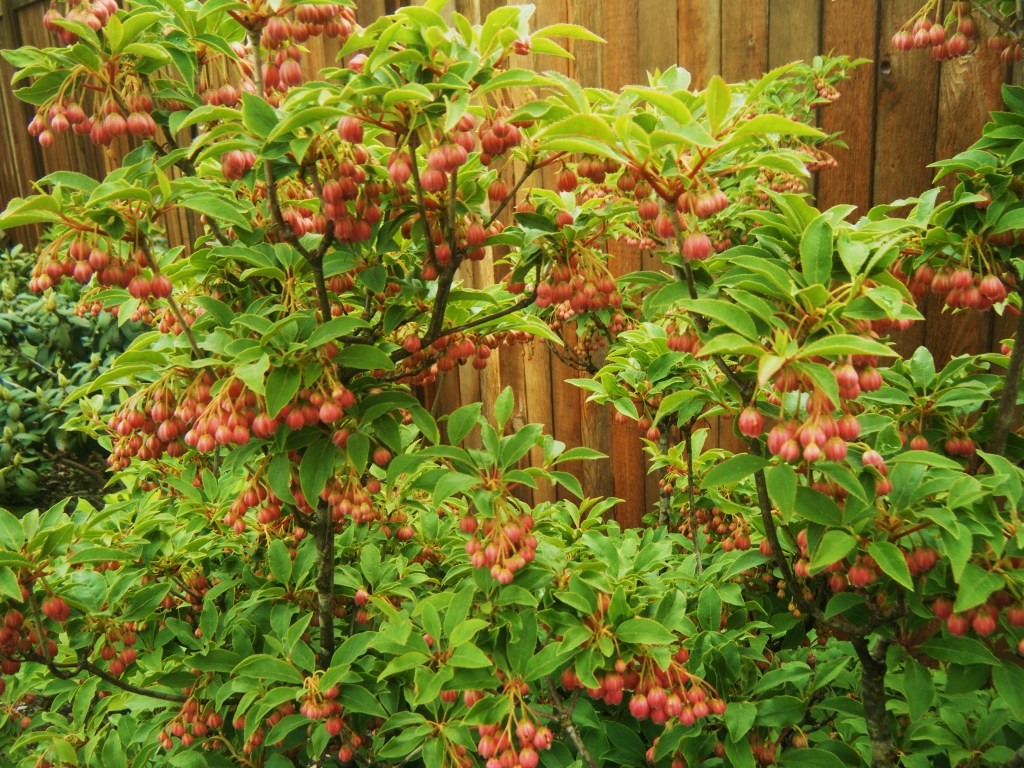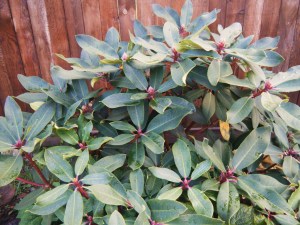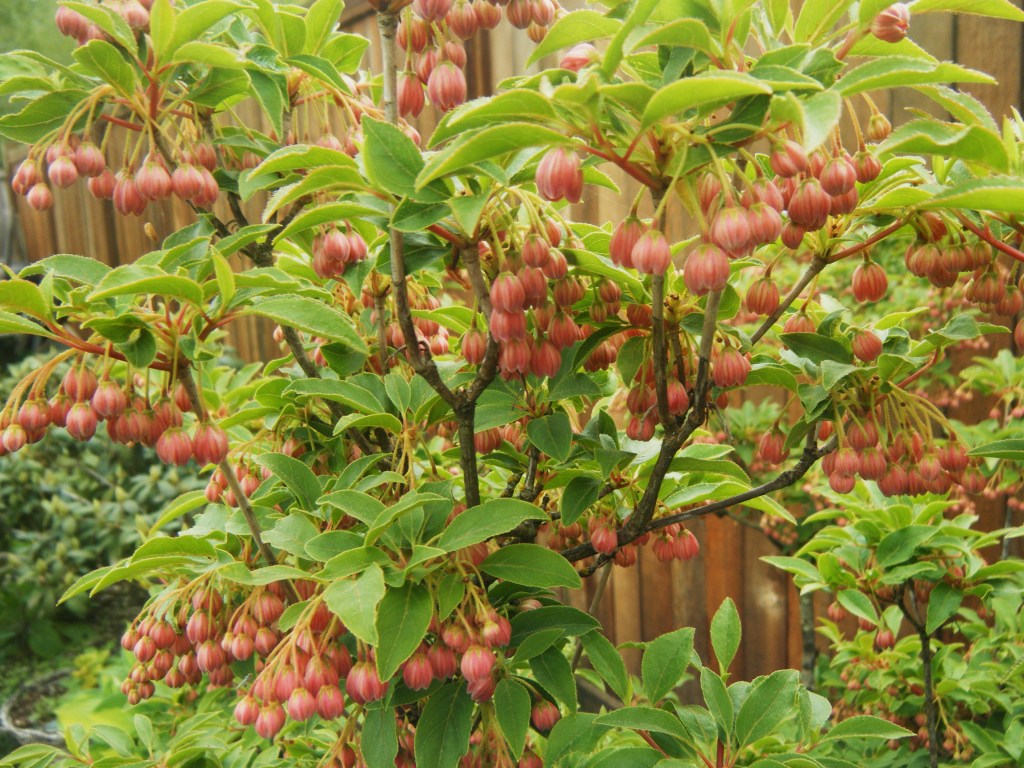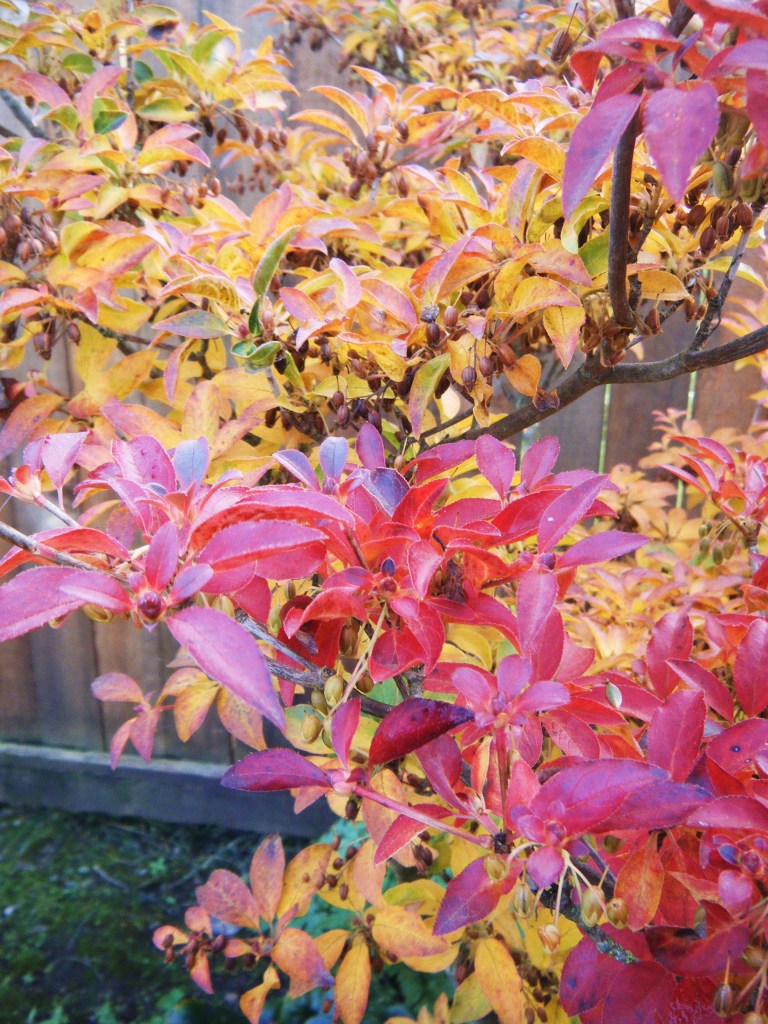Enkianthus campanulatus ‘Red Bells’ lives in my shade garden between a pair of sturdy rhododendrons. I hope that one day it will provide them some shade, because here on the wet coast it can tolerate all the meagre sunshine we receive, in fact it helps this elegant shrub develop spectacular fall colour.
A member of the heath family (Ericaceae), enkianthus requires acidic soil with plenty of organic matter and demands consistently moist, well-drained soil. Fortunately these are exactly the conditions found in my shade garden, so my enkianthus thrives alongside related plants like rhododendron, kalmia and vaccinium (blueberries).
Growing taller than wide, with a delicate vertical structure and smallish pointed leaves, enkianthus provides a striking counterpoint to the robust, heavy-leaved rhododendrons on either side, sort of like Legolas standing beside Gimli, if Gimli were young and handsome.
Depending on whom you ask Enkianthus can grow to 6’ or 8’, or maybe 12’ tall. I don’t know how many years it would take to reach 12’, but I suspect a fair few, mine grows very slowly. For those who have alkaline soil enkianthus might not do as well, but in my rainy climate and acidic soil this plant is very trouble-free. I’ve not seen any insect infestation or disease…ever, on my enkianthus.
The blossoms that appear in May are held for several weeks and are much-loved by bees so if you are trying to encourage pollinating insects, enkianthus are a good choice. The cultivar ‘Red Bells’ is rather misnamed in my opinion, there’s nothing red about the prolific pendant blooms, but I guess ‘Salmon Pink with Soft Yellow Veining Bells’ is a touch cumbersome!
In autumn enkianthus puts on a lovely show with foliage that varies from golden-yellow through shades of orange and rich scarlet. I really appreciate the fact that these sunset tones develop slowly, over several weeks and then hold for a while rather than colouring and dropping immediately like certain other shrubs planted for fall colour (burning bush, euonymous alata is popular but provides a fleeting display of colour).
Enkianthus campanulatus ‘Red Bells’ possesses a refined beauty that speaks softly, but no less clearly that its flamboyant rhododendron relatives and it deserves to be more widely planted.







Looks like a plant everyone should have in their garden but I think it might be too dry for my part of the world; our soil is NEVER moist unless we manually do it with the hose! I love the way it changes colour, it looks like a different plant! And prolific flowers! It’s a very happy plant in your shade garden!
I love the Autumn foliage on the Enkianthus campanulatus. I think I am going to look for some colourful leaves for our garden to add contrast!
Great to see these 🙂